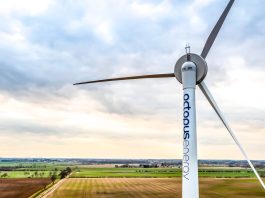The UK government has taken a significant leap towards achieving energy independence with the launch of a new investment support scheme to bolster the country’s long duration energy storage (LDES) infrastructure.
This initiative is poised to introduce the first large-scale LDES facilities in nearly four decades, playing a critical role in ensuring a reliable backup for renewable energy and enhancing the nation’s energy security.
UK Energy Minister Michael Shanks emphasised the significance of the initiative: “We are wasting no time in unlocking Britain’s vast renewable potential by expanding wind and solar power. But we also need to increase our ability to store this energy for when the sun isn’t shining or the wind isn’t blowing.
“We’re reversing a legacy that has seen no new long duration storage built for 40 years – and taking steps to unleash private investment in both established and new technologies.
“With these projects storing the surplus clean, homegrown energy produced from renewable sources, we can boost our energy security by relying less on fossil fuels, protect household bills, and help deliver our key mission to make Britain a clean energy superpower.”
The development follows the recent news that the UK Government is investing over £20bn in major carbon capture projects.
What is long duration energy storage?
Long duration energy storage works similarly to massive batteries, storing renewable energy during periods of surplus and releasing it to the grid when demand is high.
This allows for a more stable and efficient energy supply. Among the LDES technologies, pumped storage hydro is a prime example. It stores excess electricity by pumping water uphill into a reservoir, which can later be released to generate power when needed.
LDES plays a vital role in creating a constant supply of homegrown, clean energy. With these storage projects in place, the UK can significantly reduce its dependency on volatile global gas markets, helping to protect consumers from fluctuating energy prices.
Overcoming barriers to investment
Despite the immense potential of long duration energy storage, several obstacles have hindered its development – most notably, the high upfront costs of building infrastructure.
Although LDES systems tend to have low operating costs, the initial financial burden has deterred many investors.
The government’s newly announced investment support scheme aims to address this issue by boosting investor confidence. The scheme will unlock billions in funding for LDES projects, creating thousands of jobs while also accelerating the UK’s progress towards its net zero goals.
A key feature of this scheme is the proposed ‘cap and floor’ model, which guarantees developers a minimum income while capping excessive profits. This model, already successful in other sectors, will encourage investment by reducing financial risks.
Benefits and potential of renewable energy storage
The UK currently operates 2.8GW of long duration energy storage, primarily through pumped hydro schemes in Scotland and Wales.
However, estimates suggest that by 2050, the UK will need 11.5 to 15.3GW of LDES capacity to meet its net zero objectives. Expanding LDES to 20GW by 2050 could save the electricity system £24bn, slashing household energy bills and reducing reliance on natural gas.
With emerging technologies such as liquid air energy storage and flow batteries, the future of long duration energy storage in the UK looks promising. Several projects are already underway, with some expected to be operational by 2030.
This new investment support scheme marks a crucial step forward in securing the UK’s energy future, promoting clean energy, and driving the nation towards energy independence.









